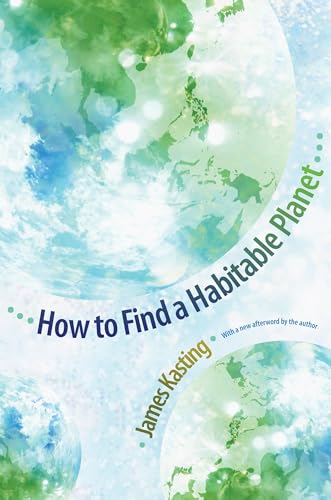This is a very well-written book that serves perfectly as an introduction for the lay reader to astrobiology and the search for life beyond Earth, and it also presents some important and up-to-date material for the specialist researcher. Of particular note for me is Kasting's rebuttal of several aspects of the Rare Earth hypothesis and his discussion of the features that truly are crucial for planetary habitability.--Lewis Dartnell, Times Higher Education How to Find a Habitable Planet will fascinate those who care about the evolution of Earth's climate and wonder about how we will eventually detect life--even simple cellular life--elsewhere.--Debra Fischer, Nature He argues persuasively that Earth's large moon and strong magnetic field are red herrings; neither is a prerequisite for life. The second part of his book is a detailed account of the search for Earth-like exoplanets, and prospects for future success.--New Scientist Kasting's book ... is a readable guide to the many things we have just begun to understand about a solar system.--Tim Radford, The Guardian Kasting, a key planner for future NASA missions seeking Earth-like exoplanets, possesses a deep understanding of all the multifarious complexities that feed into forming--and finding--living worlds. He writes about these topics, for all their profundity, with remarkable precision and clarity, drawing clear linkages between what we observe through telescopes with what we see right here, in the only biosphere we know. How to Find a Habitable Planet is a canonical guide to the probable future of humanity's search for life elsewhere in the Universe.--SEED Magazine A 'popular textbook', low on speculation but high on nuts-and-bolts science, it covers everything from the habitable zones around other stars to how to find other Earths. If I had to choose just one of these books, it would be Kasting's.--Marcus Chown, BBC Focus Magazine Written in a clear and often conversational style--and infused throughout with Kasting's personal optimism regarding the existence of, and our ability to detect, habitable and inhabited worlds beyond our own--this is an informative and worthwhile read for anyone who looks to the stars and wonders if there is anybody out there.--Tori M. Hoehler, Nature Geoscience As Kasting shows in his technical but readable How to Find a Habitable Planet, we are making rapid progress in discovering planets around distant stars--almost 500 so far.--Clive Cookson, Financial Times A concise yet thorough scientific explanation of how we can narrow down the search [for habitable planets]... Kasting is a world leader in planetary habitability and works closely with NASA. He gives insight into the latest technology being used to hunt for habitable plants, describes the signatures of life that scientists are looking for and makes his predictions for the future of the field... Thorough and interesting.--Cosmos Magazine An excellent book on a fascinating topic.--Choice Even if you were not interested in finding intelligence elsewhere in the universe, How to Find a Habitable Planet provides an excellent and accessible account of the formation and history of our own planet, and indeed our solar system.--John Gribbin, Literary Review In How to Find a Habitable Planet, James Kasting begins by describing various factors that geophysicists, astrobiologists and others have deemed necessary (or at least desirable) for producing planets capable of supporting life... How to Find a Habitable Planet offers an eloquent explanation of why such a mission would still be desirable.--Physics World [Kasting is] an excellent writer, capable of breaking down complex topics into clear and accessible pieces. That skill makes this first-of-its-kind book not just unique but probably indispensible for students and armchair planetologists.--Charlene Brusso, Ad Astra
